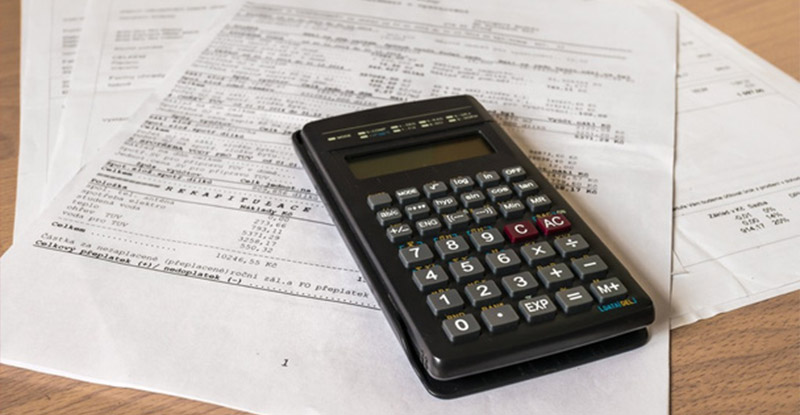How to Write an Expense Report:
17 Best Practices
Master the art of efficient expense management.


Uncover key strategies for streamlining the expense reporting process, ensuring accuracy and compliance. Learn from industry experts about innovative tools and techniques that can save time and reduce errors. Whether you're a small business owner or part of a large corporation, our practical tips will help you optimize your expense report workflow and make financial management a breeze.
In the fast-paced world of business, keeping a close eye on expenses is vital for maintaining financial health. Whether you’re a seasoned financial manager or occasionally find yourself grappling with the complexities of expense reports, these documents are an integral part of corporate life. While they provide valuable insights, they can also pose challenges.
In this guide, we will discuss expense reports within the business context. We’ll demonstrate how mastering them can empower your organization to take charge of its finances and make more informed financial decisions. So, prepare for the journey ahead – let’s embark on a comprehensive exploration of corporate expenses!
An expense report is a document or form used to record and track expenses incurred by an individual or an organization during a specific period, typically for business purposes. It serves as a detailed record of expenditures and is an essential tool for financial management and tracking.
Expense reports typically include the following information:
Expense reports are used by employees, business travelers, and professionals to seek reimbursement from their employers or clients for money spent on behalf of the organization. These reports help ensure that expenses are properly documented, within budgetary guidelines, and comply with company policies and tax regulations.
Additionally, for businesses, expense reports play a crucial role in financial planning, budget tracking, and evaluating spending patterns. Many organizations use specialized software or apps to simplify the process of creating and managing expense reports, making it more efficient and accurate.

Enjoy the benefits of cutting-edge technology, including OCR and AI-driven data extraction. Reduce processing times and focus on what matters most. Join the future of expense management now!
Creating an expense report is a systematic process that involves documenting and summarizing your expenditures for a specific period, often for business purposes. Here’s a step-by-step guide on how to create an expense report.
Collect all receipts, invoices, and other supporting documents related to your expenses. These documents serve as evidence of your expenditures.
Depending on your preference or your organization’s requirements, you can choose to create your expense report using spreadsheet software like Microsoft Excel or Google Sheets. Alternatively, you may use specialized expense management software or apps if available.
Start your report by adding a header that includes essential information such as your name, the reporting period (e.g., month, quarter, or specific dates), your employee or account number, and any other pertinent details required by your organization.
Create a table or section to list your individual expenses. Include columns for the date, description of the expense, category (e.g., meals, transportation, lodging), and the amount spent for each expense.
For each expense, fill in the relevant information in the respective columns. Be clear and concise in your descriptions to ensure easy understanding and verification.
Sum up the total amount spent for each category and for the entire reporting period. Include a subtotal for each category and a grand total for all expenses.
RELATED: Expense Management Software:
What Is It and How It Helps

Scan or attach digital copies of your receipts and invoices to the expense report. Ensure that the receipts match the expenses listed in the report. If there are any exceptional circumstances or additional explanations required for specific expenses, include comments or notes to provide context.
Carefully review your expense report to check for accuracy, completeness, and compliance with your organization’s policies and guidelines.
Once you are satisfied with the accuracy of your report, submit it for approval according to your organization’s procedures. Typically, you’ll need to forward it to your manager or the relevant department for review. Retain a copy of the completed expense report for your records.
If necessary, follow up on the status of your expense report and ensure that any approved reimbursements are processed accordingly.
Creating an expense report may vary in complexity depending on your organization’s requirements and the tools you use. Following these steps will help you maintain an organized and accurate record of your expenses for reimbursement or financial tracking purposes.
Transform the way your team handles expense reports with Artsyl’s docAlpha. Experience seamless integration, automated data capture, and real-time processing. The manual entry of data is over. Start your journey towards streamlined expense management now!
Book a demo now
Creating an expense report template can simplify the process of recording and tracking expenses for individuals or businesses. Here’s a basic expense report template you can use as a starting point. You can customize it to suit your specific needs:
Expense Report for [Month/Year]: ______________
Employee Name: ___________________________
Employee ID: ______________________________
Department: _______________________________
Expense Category Date Description Amount ($)
———————————————————————
…
Subtotal [Category 1]: $__________________
Subtotal [Category 2]: $__________________
Subtotal [Category 3]: $__________________
…
Total Expenses: $_______________________
Receipts Attached: [Yes / No]
Additional Notes or Comments:
_____________________________________
_____________________________________
_____________________________________
This template offers a straightforward structure for recording expenses. You can tailor it to your specific requirements, such as adding more categories, including tax-related information, or adjusting the format to match your organization’s guidelines.
Using a consistent template makes it easier to manage and submit your expense reports accurately.
Unlock the full potential of your finance department with docAlpha. Automate tedious expense report processing, reduce errors, and enhance compliance. Leverage the power of AI and machine learning for smarter finance operations. Embrace the change and empower your team today!
Book a demo now
The expense report approval process is a structured workflow that organizations follow to review, validate, and authorize employee or business expenses before reimbursement. This process helps ensure that expenses are legitimate, comply with company policies, and are accurately documented. Here’s an overview of the typical steps in an expense report approval process.
The process begins with the employee or expense submitter filling out an expense report. They document all incurred expenses, attach receipts, and provide any necessary explanations or justifications.
The expense report is submitted to an initial reviewer, often the employee’s immediate supervisor or manager. This reviewer checks for completeness, accuracy, and adherence to company policies.
Based on the initial review, the manager can either approve the expense report or send it back to the employee for corrections or further information. If approved, it moves to the next step.
In some organizations, a secondary reviewer, such as the finance department or a higher-level manager, may conduct an additional review for compliance and budget considerations.
RELATED: AP Automation Solutions that Leverage Artificial Intelligence
The expense report, along with any approvals, is forwarded to the finance department or accounting team. They verify the accuracy of the expenses, ensure compliance with tax regulations, and allocate costs to appropriate budget categories.
Depending on the organization’s structure, there may be multiple levels of approval. Higher-value expenses or those requiring special authorization may need approval from senior management or department heads.

Once all necessary approvals are obtained, the finance department processes the reimbursement to the employee. The reimbursement can be made via direct deposit, a paper check, or another agreed-upon method.
A copy of the approved expense report is retained for record-keeping and audit purposes. Many organizations now use digital expense management systems to store and organize expense reports electronically.
Periodically or randomly, organizations may conduct audits to ensure that expense reports are accurate, compliant, and in line with company policies. Audits can help identify any irregularities or issues.
The specific steps and approval hierarchy can vary between organizations and may depend on the complexity of the expense report and the industry’s regulatory requirements.
Automation tools and software are often used to facilitate and expedite the expense report approval process, reducing manual administrative tasks and improving accuracy.
Discover the ease of managing expense reports with Artsyl’s docAlpha. Instantly convert receipts into comprehensive expense reports. Enjoy fast, accurate, and automated data entry. Transform your expense management with just one click. Try docAlpha now!
Book a demo now
Implementing expense report automation can streamline your organization’s expense management process, save time, reduce errors, and improve compliance with expense policies. Here’s a step-by-step guide on how to implement expense report automation effectively:

Contact Us for an in-depth
product tour!
RELATED: What CFOs Should Know About Financial Statements and Reports
Implementing expense report automation requires careful planning, coordination, and ongoing management. However, the benefits in terms of efficiency, accuracy, and cost savings can be substantial for organizations of all sizes.
Elevate your organization’s efficiency with docAlpha’s advanced expense report processing. Benefit from faster approvals, reduced costs, and improved accuracy. Join the ranks of forward-thinking businesses revolutionizing their expense management.
Book a demo now
Filling out your expense report doesn’t have to be stressful anymore. By following these simple steps, you can breeze through the whole process with ease.
Before you can start filling out your expense report, you need to collect all your receipts. Whether it is a receipt from your flight or a dinner with colleagues, make sure you keep all of them safe. If you lose a receipt, chances are your expense might not get approved, and you may have to bear the cost yourself.
The next step is to categorize your expenses. You can use the categories mentioned in your company’s expense policy or ask your manager if you are unsure. Some common categories include travel, meals, accommodation, and entertainment. Make sure you double-check the policy to know what is allowed and what isn’t.
Once you have all your receipts and categories sorted, it’s time to add up all your expenses. Use a spreadsheet or online tool to ensure you don’t miss a penny! Make sure you include all the relevant details, such as the date, location, and reason for the expense.
If you have any additional details, make sure to add them in the report. For example, if you took a client out to dinner, make note of who they are and why you were meeting. This information will help your manager understand the context and approve your expense faster.
Finally, the most crucial step – submitting your report on time! Make sure you submit the report as soon as possible after your trip or event. Most companies have a specific deadline, and missing it can lead to unnecessary delays in getting your reimbursement.
Remember to keep all your receipts, categorize your expenses, add all the details, and submit your report on time. With these tips, you can be sure to impress your boss with your impeccable expense report skills!
Gain unparalleled control over your expense reporting process with docAlpha. Experience the convenience of automated workflows, enhanced visibility, and detailed analytics. Make informed decisions and streamline your financial operations. Take control and transform your expense reporting today!
Book a demo now
An expense report is a document used to record and summarize expenses incurred by an individual or organization. It includes details of expenditures, such as date, description, category, and amount.
Expense reports are essential for financial management, as they help track spending, ensure compliance with policies, support tax deductions, and facilitate reimbursement processes.
To create an expense report, gather receipts and documentation, use a template or expense management software, list expenses, categorize them, calculate totals, and submit for approval.
An expense report should include the date of the expense, a description, expense category, amount, and any supporting documentation, such as receipts.
To ensure accuracy, double-check all details, match receipts to expenses, review your organization’s expense policies, and seek clarification when needed.
Typically, business-related expenses like travel, meals, accommodation, transportation, office supplies, and client entertainment can be included. However, the specific expenses allowed may vary by organization.
The approval process involves submitting the report to a manager or supervisor for review. It may also require additional approvals from finance departments or higher management, depending on the organization’s policies.
The time it takes to receive reimbursement varies by organization and can range from a few days to several weeks. It depends on the organization’s policies and processing times.
Yes, many organizations use expense management software to automate the expense reporting process. These tools streamline expense capture, approval workflows, and reporting.
If an expense report is rejected, you may need to make corrections, provide additional information, or seek approval from a higher authority. It’s essential to address the reasons for rejection and resubmit.
Yes, many organizations conduct periodic audits of expense reports to ensure compliance with policies, verify expenses, and prevent fraud.

Yes, some expenses included in reports may be tax-deductible for individuals or eligible for reimbursement by employers. It’s important to consult with a tax professional for guidance.
In many cases, employees can use personal credit cards for business expenses and include them in expense reports. However, organizations often have guidelines and reimbursement policies in place.
If you lose a receipt, document the expense as accurately as possible in your report. Some organizations may accept alternative forms of verification, such as credit card statements or affidavits.
The ability to submit past expenses may depend on your organization’s policies. Some organizations may have specific time limits for expense submissions.